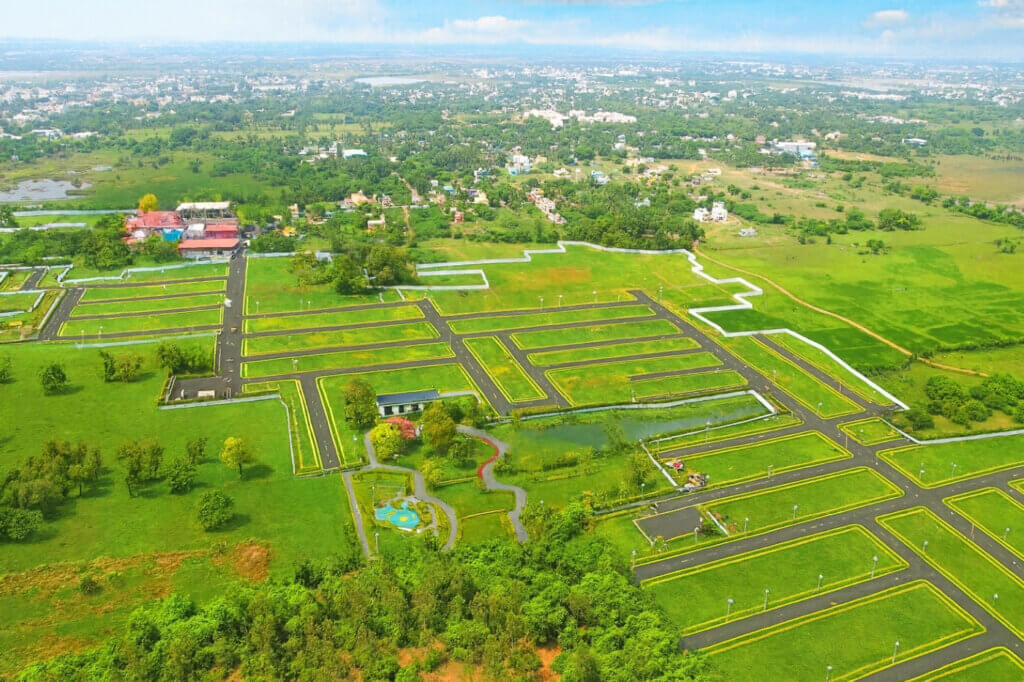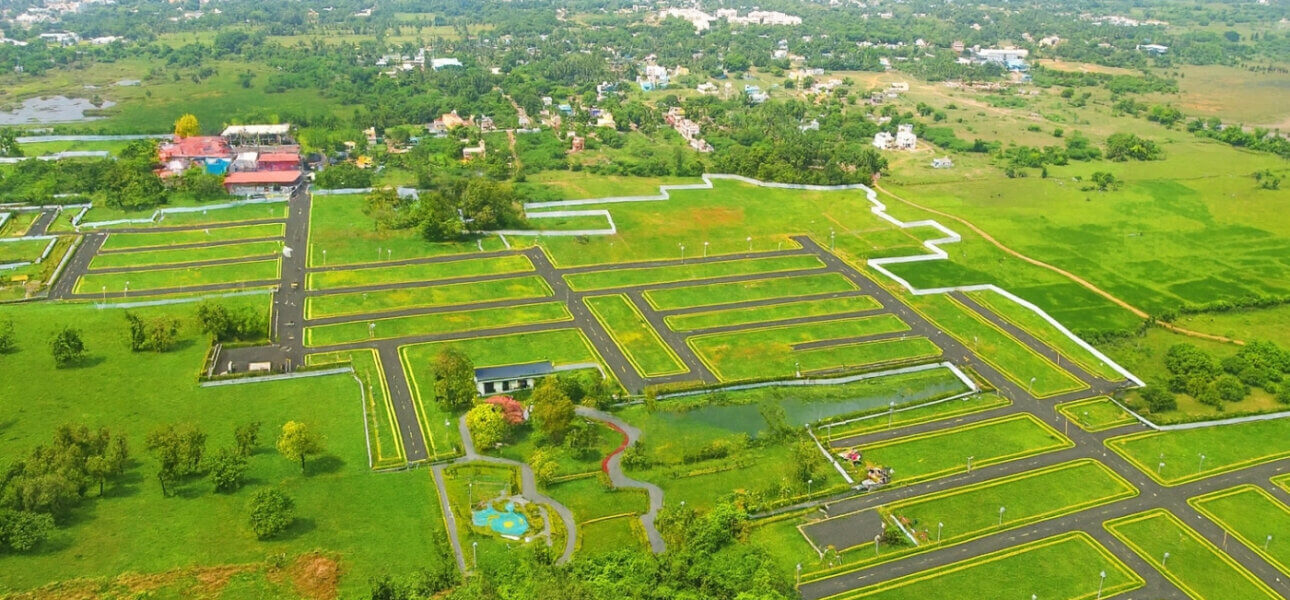A sustainable home does not have to mean overspending. With the right plan, small upgrades can lower your monthly bills from day one and pay back quickly. If you are building or planning a villa at Padappai–Oragadam, here is a simple ROI-first guide to help you budget smartly and live greener.

Why plan sustainability with ROI in mind
Adopting energy and water saving measures is easiest at the design stage and still feasible during renovations. When you compare the upfront cost against monthly savings, many upgrades recover their cost within two to five years. In warm, sunny locations like Padappai near Oragadam, solar and cooling-efficiency upgrades can deliver especially strong returns.
Your budget blueprint
Think of your plan in three layers. You can start with the essentials and add the next layers as your family and budget grow.
Layer 1: Essentials that pay back fastest
Focus on the lowest cost per unit of saving. These are usually plug-and-play and perfect for any new home.
- LED lighting across the home
Upfront: low. Payback: 6 to 12 months through lower power bills and longer bulb life. - 5-star inverter ACs and refrigerators
Upfront: moderate. Payback: 2 to 3 years with lower electricity use during long summers. - Aerators and low-flow showers
Upfront: low. Payback: under 1 year through water savings and reduced motor usage. - Smart power strips and timers
Upfront: low. Payback: under 1 year by cutting standby losses in TVs, routers and chargers. - Reflective roof coat and proper ceiling insulation
Upfront: low to moderate. Payback: 1 to 2 years through lower AC run time.
Layer 2: Smart saver upgrades for villa plots
These suit independent homes in Padappai where you control your own roof and garden.
- Solar water heater
Upfront: moderate. Payback: 2 to 3 years by replacing electric geyser usage for most months. - 2 to 3 kW rooftop solar PV
Upfront: moderate. Payback: 3 to 4 years with strong Chennai sun and daytime loads. - Rainwater harvesting with first-flush and storage sump
Upfront: moderate. Payback: 2 to 4 years via lower tanker dependence and better borewell recharge. - Drip irrigation with native plants
Upfront: low to moderate. Payback: 1 to 2 years in water and maintenance savings. - AAC blocks or cavity walls for new construction
Upfront: moderate. Payback: 3 to 5 years with reduced cooling demand and better comfort.
Layer 3: Premium impact options
Plan these when you are ready for long-term value and superior comfort.
- 4 to 5 kW solar PV with net metering readiness
Upfront: higher. Payback: 4 to 6 years, hedging against future tariff hikes. - Solar-ready wiring and conduit layout during construction
Upfront: low. Payback: immediate future-proofing and lower retrofit costs later. - Greywater reuse for landscaping
Upfront: moderate. Payback: 3 to 5 years with reduced freshwater use and healthier gardens. - High performance windows with shading design
Upfront: moderate to higher. Payback: 4 to 6 years by cutting AC loads and noise.
Sample budgets for a 2–3BHK villa in Padappai
These illustrations help you prioritise. Actual costs vary by brand and contractor.
Starter green pack: ₹75,000 to ₹1.2 lakh
- Whole-home LEDs
- Two aerators and two low-flow showers
- Reflective roof coat for 800 to 1,000 sq ft
- Smart strips and timers
Estimated savings: ₹1,500 to ₹2,500 per month. Typical payback: 2 to 3 years.
Smart saver pack: ₹2.5 to ₹3.5 lakh
- Add 2 kW rooftop solar PV
- Solar water heater
- Drip irrigation with native plants
Estimated savings: ₹3,500 to ₹5,000 per month. Typical payback: 3 to 4 years.
Premium impact pack: ₹5 to ₹7 lakh
- 4 kW solar PV, solar-ready wiring
- Greywater reuse setup
- High performance windows for main rooms
Estimated savings: ₹6,000 to ₹8,000 per month. Typical payback: 4 to 6 years.
Padappai–Oragadam context: what works best
- Long summers and high sunshine make solar and heat-reduction upgrades outstanding value.
- Villa plots give you roof and setback control, so rainwater harvesting and drip irrigation are straightforward.
- Frequent use of ACs in peak months increases the ROI of insulation, reflective roofing and shading trees.
- Native trees like neem, pungai and poonga provide shade, reduce dust and cut cooling costs while staying low-maintenance.
Design first, then devices
Before buying gadgets, lock the fundamentals during planning.
- Orient living spaces to capture breeze and reduce afternoon heat.
- Provide deep chajjas and pergolas on west and south openings.
- Keep ducts and conduits ready for future solar, EV charging and water reuse.
- Choose light-coloured exterior paints to reflect heat.
- Reserve a compact utility zone for filtration, greywater and pump controls.
Cost control tips while building
- Bundle purchases for appliance discounts and extended warranties.
- Use BIS and BEE star ratings as your quick filter.
- Ask your contractor to quote lifetime cost, not only materials cost.
- Phase upgrades: start with Layer 1, then add solar in year two when you understand your loads.
- Document all serial numbers and bills for future service.
Quick ROI calculator you can do at home
- List your current or expected monthly units and water usage.
- For each upgrade, note expected percentage reduction.
- Multiply your bill by the reduction to get monthly saving.
- Divide upfront cost by monthly saving to see payback months.
- Prioritise anything under 36 months for fast results.
Example priority list for a Padappai villa
- Month 1: LEDs, aerators, reflective roof coat.
- Month 2: Replace one high-use AC with 5-star inverter.
- Month 3: Install solar water heater.
- Month 6 to 9: Add 2 to 3 kW solar PV.
- Year 2: Plan greywater reuse and window upgrades.
Liveable today, valuable tomorrow
Homes that are cheaper to run also resell faster. A buyer at Oragadam often values proven low bills, reliable water systems and ready solar more than cosmetic changes. When you document your upgrades, you are building a strong resale story.
To explore villa plots designed for practical, future-ready living, visit velammalgarden.com and see how thoughtful layouts, greenery and infrastructure help your sustainability plan. You can also book a site visit and learn about current plot options at velammalgarden.com.
FAQs: budget for sustainability upgrades roi view sustainable home padappai
What is the best first upgrade for a sustainable home in Padappai
LED lighting and aerators give the quickest payback with very low upfront cost. Pair them with a reflective roof coat to reduce AC runtime in summer.
How much solar should I install for a 2–3BHK villa
Most families start with 2 to 3 kW to cover daytime loads. If you plan EV charging or work from home, consider 4 kW. Design the conduit now even if you add panels later.
Is rainwater harvesting worth it for individual plots
Yes. A simple first-flush, filter and storage system reduces tanker dependence, improves borewell recharge and keeps gardens healthy. Over time, it lowers monthly water costs and adds resilience.
Do 5-star inverter ACs really save that much
Inverter ACs adjust compressor speed to load, which cuts electricity use during the long Chennai summer. Combined with shading and insulation, they can reduce cooling bills significantly and pay back in two to three years.
How do I phase upgrades if my budget is tight
Start with Layer 1 essentials, then add solar water heater and a small PV system. Keep wiring solar-ready during construction. This phased approach spreads cost while locking in savings early.
Ready to plan your sustainable villa life the smart way Contact our team for plot availability and on-ground guidance at velammalgarden.com.


